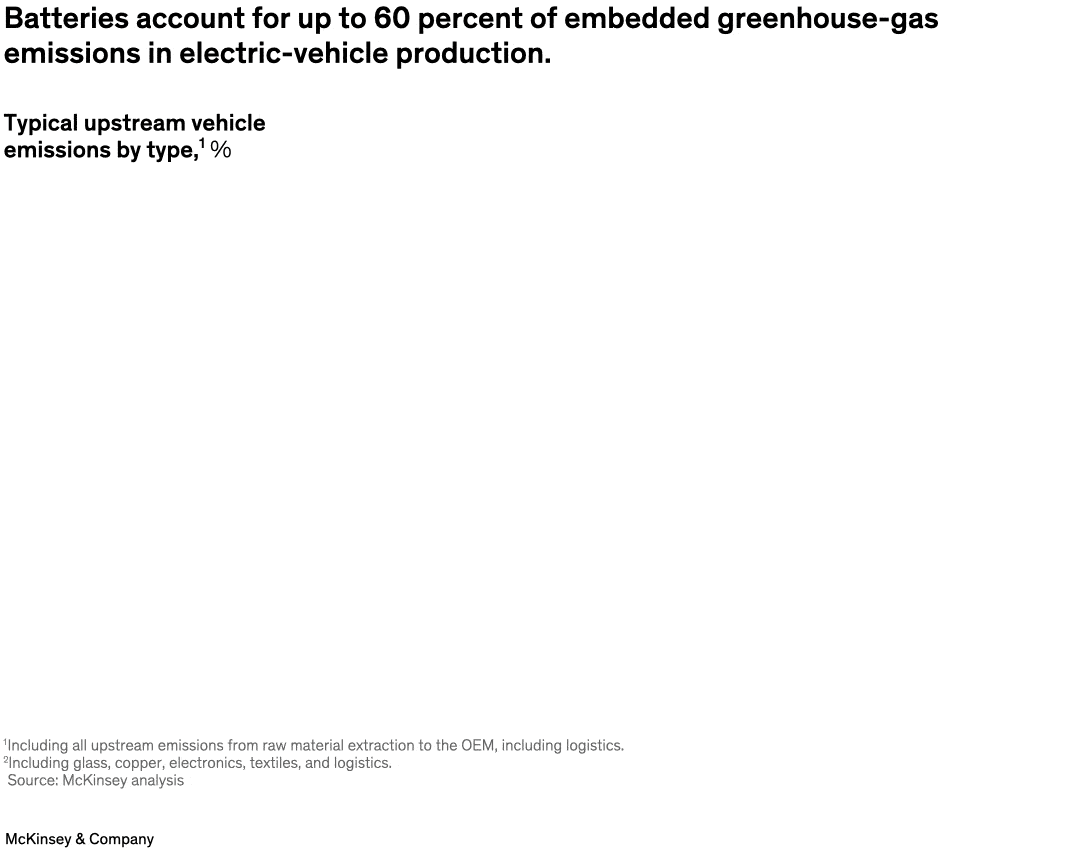Unlike vehicles with internal combustion engines, electric vehicles (EVs) do not produce direct tailpipe emissions from burning diesel and gasoline. But battery-powered EVs have a major emissions challenge of their own. Producing the large lithium-ion batteries used to power EVs is a highly carbon-intensive process, accounting for about 40 to 60 percent of total EV production emissions, estimate senior partners Martin Linder and Tomas Nauclér and coauthors.

Image description:
A pair of tree map area pie charts contain squares representing 100% of the typical upstream greenhouse-gas (GHG) vehicle emissions, by type. In this case, upstream refers to emissions created during vehicle production. The left side of the two boxes shows upstream emissions for traditional internal combustion engine vehicles, and the right side represents upstream emissions from battery electric vehicles (BEVs). The emissions from BEVs are twice that from internal combustion engines during production. Each square is segmented into the areas where GHG is created by the materials used. In both squares those areas include similar shares of aluminum, steel, plastics and rubber, and other, but in BEV manufacturing, approximately 50% of the GHG emissions come from battery production, which is not a part of internal combustion engine production.
Footnote 1: Including all upstream emissions from raw material extraction to the OEM, including logistics.
Footnote 2: Including glass, copper, electronics, textiles, and logistics.
Source: McKinsey analysis
End of image description.
To read the article, see “The race to decarbonize electric-vehicle batteries,” February 23, 2023.